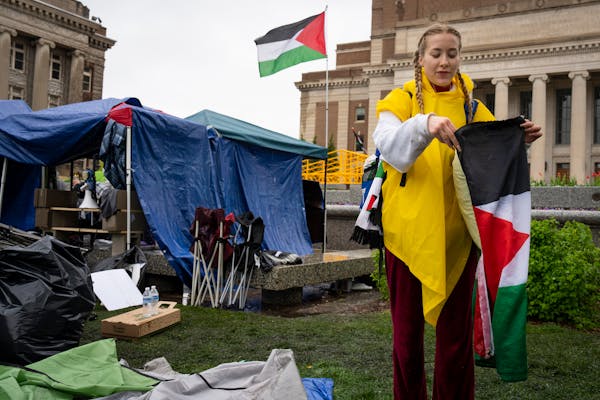West metro suburbs are charging toward goals to build more apartments for people of moderate incomes by 2030, but building homes for people with very low incomes has been a much bigger challenge — especially amid high construction costs.
Developers say they need more public funding than what cities alone can offer to subsidize housing for people with lower incomes, especially those making less than 30% of the area median income — defined as a single person making less than $26,000 a year or a family of four with less than $37,250.
"The bottom line, in meeting our extremely-affordable housing goals, is the need for resources," said Cherie Shoquist, Golden Valley's director of community development.
Cities are falling short of their goals to build deeply affordable housing in the next decade.
For example, in Minnetonka since 2020, developers have not built any apartments priced to be affordable for the lowest-income renters. Edina has approved 22, or less than 3% of the apartments city estimates its poorest renters will need. St. Louis Park has approved just 39 apartments that would be affordable for people making 30% of the median. All three cities have approved hundreds of apartments for people making 50% or 60% of the median income.
Chris Dettling of nonprofit developer Project for Pride in Living said, the rents from a building priced to be affordable to those lowest-income tenants are not enough to cover the operating costs, much less pay down construction debt as construction gets more expensive and the need for affordable housing grows.
"Rents are lower, so that decreases the amount of debt a project can support so that creates a gap." Developers look to public financing to fund the gap between bank loans and the cost of a project — such as a donation of land, waivers of fees or tax credits. "Anything to reduce the burden."
Some combination of local, state and federal subsidies are needed to fund construction when rents will be kept low. Competition for grants mean not every project gets a subsidy, and it can take years to line up all the money from all the different sources.
Despite funding in the state budget — $1 billion for various affordable housing programs included about $5.8 million to boost local affordable housing efforts — there is still stiff competition for what still feels like too little money to subsidize construction.
Competition among renters
The Twin Cities — like most places across the country — have nowhere near enough apartments and homes affordable to people with low incomes.
The National Low Income Housing Coalition estimates the Twin Cities metro will need some 100,000 more apartments and homes affordable to he lowest-income Minnesotans at 30% or less of the area median income, and another 80,000 for those making 50% of the area median income.
Renters with very low incomes tend to have the hardest time finding a place they can afford, said Eric Hauge, executive director of HOME Linecqab, a Bloomington-based tenant advocacy group.
The relative trickle of new homes priced for the lowest-income renters makes it even harder to find a place to live, with low-income renters jostling for a limited supply of cheap apartments.
Of about 14,000 people HOME Line has advised over the last 18 months, Hague said, close to half made what's considered an extremely low income — about $21,000 or less per year for a single person, or less than $31,000 for a family of four.
Responding to the shortage of affordable housing, many cities now require more from developers — and that expectation makes things move a little faster and smoother.
"You don't hear developers asking, 'Do I have to?'" said Minnetonka community development director Julie Wischnack. "It's more, 'How much, and what type?'"
Scramble for grants
Criteria for some subsidies, like the state's low-income housing tax credits, can feel weighted against building in suburbs. Shoquist said scoring criteria include the income in the project's census tract and proximity to public transit.
"Suburbs like Golden Valley have a hard time competing successfully under the qualified allocation program for tax credits," she said.
In the seven-county metro area, state data show almost half of state housing tax credits are granted to build in Minneapolis and St. Paul. Of almost 60,000 apartments funded with the credits in the metro in the past 20 years, nearly 30,000 have been in the two cities — though the most recent tax credit-funded developments are weighted more toward suburbs.
Cities have found other ways to help subsidize apartments, like directing tax-increment financing to affordable housing trust funds, allowing the money to be spent outside existing tax-increment districts. But there is still a far greater need for affordable housing than there are subsidies available, with the problem exacerbated by today's high construction costs.
"It's difficult to develop affordable housing anywhere," said Project for Pride in Living's Dettling. "Suburban, urban, greater Minnesota — the challenges are all across the country when it comes to availability of resources."

Wolves vs. Nuggets series updates: Times for first four games set
Medical examiner identifies pedestrian hit by vehicle and killed in Bloomington
Souhan: A sausage? A knee surgery? Minnesota sports has gone mad

